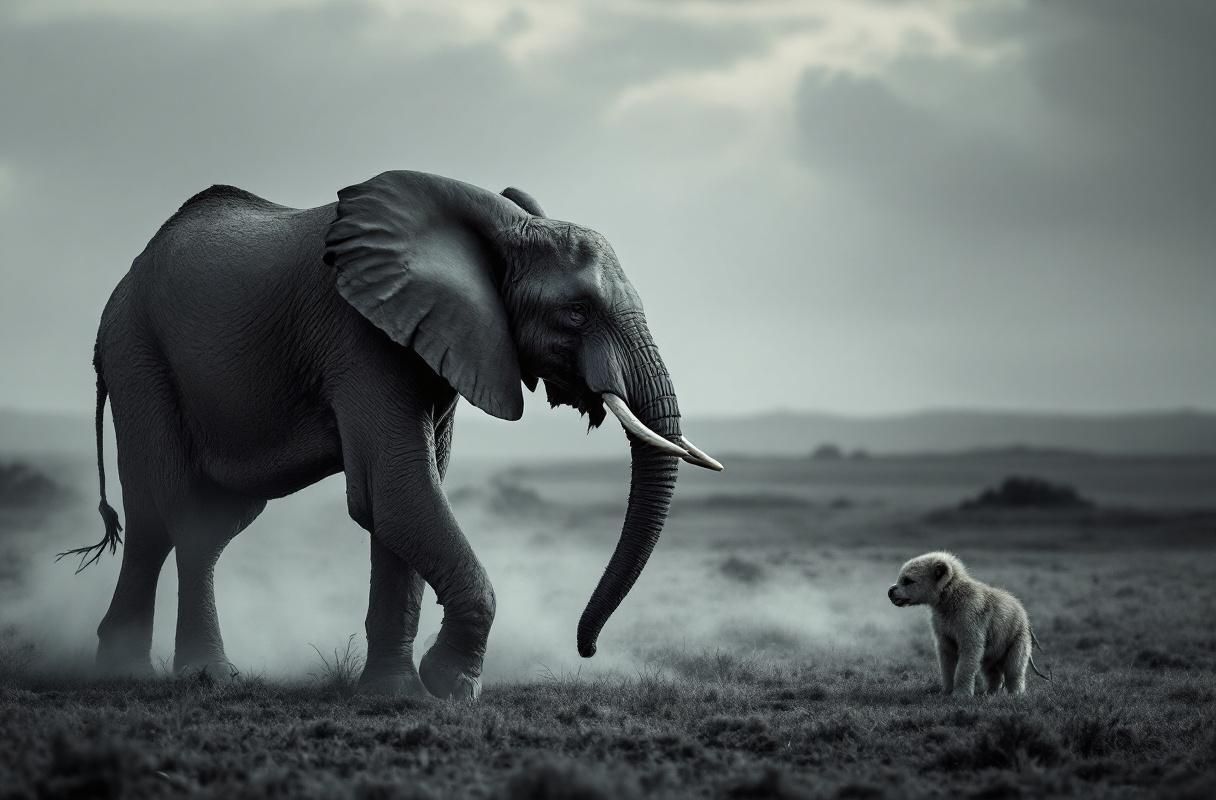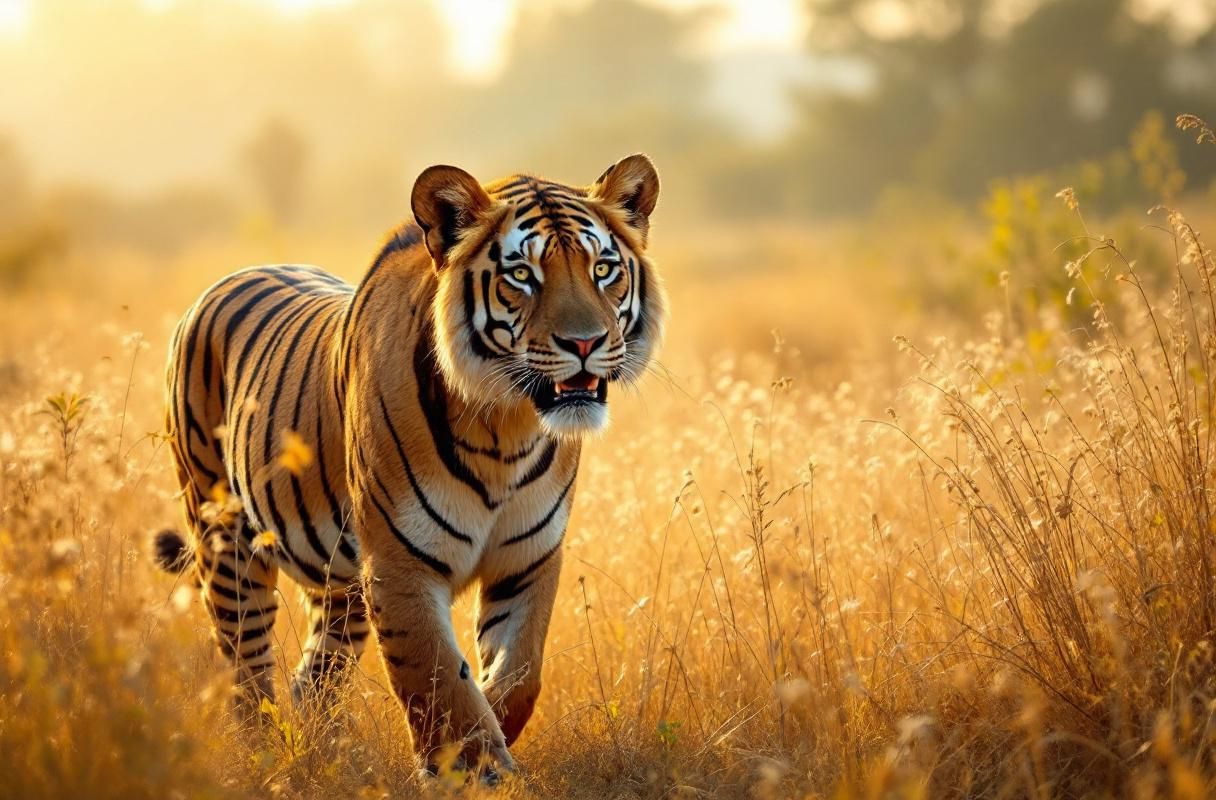
The world of wildlife is as diverse as it is fascinating, with each continent hosting unique species that have adapted to their environments in remarkable ways. When discussing wildlife, two continents often come to mind: Africa and Asia. This article delves into the distinct characteristics of African animals compared to their Asian counterparts. By exploring these differences, readers will gain a better understanding of the ecological and behavioral traits that define these animals. Additionally, for those interested in experiencing these creatures firsthand, we will provide insights into what to pack for an unforgettable safari adventure in Africa.
African animals are renowned for their striking appearances and unique behaviors. The continent is home to a wide array of species, from the iconic Big Five—lion, leopard, elephant, rhinoceros, and Cape buffalo—to the lesser-known creatures like the aardvark and the okapi. The diversity of habitats, including savannas, deserts, and rainforests, plays a significant role in shaping the characteristics and behaviors of these animals.

The Big Five are often the primary focus for wildlife enthusiasts and safari tours. These animals were originally termed the "Big Five" by big-game hunters, but today, they represent the ultimate goal for wildlife photographers and tourists.
Lion: Known as the king of the jungle, lions are social creatures that live in prides. Their hunting strategies and social structures are complex, making them fascinating to observe in the wild.
Elephant: The largest land animals on Earth, African elephants are known for their intelligence, strong family bonds, and intricate social structures. Their role in the ecosystem as keystone species is critical.
Leopard: Masters of stealth, leopards are solitary and elusive. Their adaptability allows them to thrive in various habitats, often seen dragging prey up into trees to avoid scavengers.
Rhinoceros: Both the black and white rhinos inhabit Africa, each with unique traits. Conservation efforts are crucial for their survival due to poaching threats.
Cape Buffalo: Often underestimated, these animals are known for their unpredictable nature and strong herd dynamics. They are formidable opponents for predators.
African animals exhibit remarkable adaptations that enable them to survive in diverse environments. For example, the long neck of the giraffe allows it to reach high foliage, while the large ears of the African elephant help regulate body temperature. Furthermore, many African animals have evolved behaviors that enhance their survival:
Nocturnal habits: Many species, such as the African wild dog, have adapted to hunt during the cooler night hours, avoiding the heat of the day.
Migration patterns: The great migration of wildebeest and zebras is a spectacular event driven by seasonal changes in food and water availability.
Camouflage: Animals like the chameleon and various species of antelope use camouflage to evade predators, blending seamlessly into their surroundings.
In contrast, Asian animals offer a different set of characteristics and adaptations. The continent boasts a rich tapestry of wildlife, from the majestic Bengal tiger to the gentle giant, the Asian elephant. Understanding these animals requires a look into their habitats, behaviors, and the ecological roles they play.

The Bengal tiger is perhaps the most iconic of Asian animals. With its striking orange coat and black stripes, it symbolizes strength and grace. Tigers are solitary hunters, relying on stealth and strength to capture prey.
Habitat: Tigers inhabit various environments, including tropical forests, grasslands, and mangroves. Their adaptability to different terrains is noteworthy.
Conservation status: The Bengal tiger is currently classified as endangered, with habitat loss and poaching being significant threats. Conservation efforts are vital to ensure their survival.
Asian elephants are smaller than their African relatives but possess unique features and behaviors. They are known for their intelligence and strong social bonds.
Cultural significance: In many Asian cultures, elephants hold a revered status and are often featured in religious ceremonies and festivals.
Habitat: Asian elephants are found in forests and grasslands across India and Southeast Asia, where they play crucial roles in maintaining the ecosystem.
Asian wildlife exhibits fascinating adaptations that reflect the continent's diverse habitats. For instance, the snow leopard is perfectly adapted to the cold mountainous regions of Central Asia, with its thick fur and long tail for balance. Other notable adaptations include:
Specialized feeding habits: Many Asian animals, like the giant panda, have specific diets that dictate their survival. Pandas rely almost exclusively on bamboo, affecting their habitat range.
Social structures: Species like the Indian wolf live in packs, demonstrating complex social behaviors that enhance their hunting efficiency.
While both continents boast a plethora of unique species, there are significant differences in their wildlife. Understanding these distinctions can enhance wildlife experiences, whether on safari tours in Africa or exploring the jungles of Asia.

One of the most significant differences lies in the habitats and biodiversity of each continent. Africa's vast savannas support large herds of herbivores and their predators, while Asia features a mix of dense forests, mountains, and grasslands, fostering a different array of species.
Herbivore diversity: African savannas host numerous grazing species, such as zebras and wildebeests, whereas Asian habitats support animals like the Indian antelope and the water buffalo.
Predator dynamics: Africa's top predators, such as lions and hyenas, often hunt in groups, while many Asian predators, like tigers and leopards, are solitary hunters.
Both African and Asian animals face significant conservation challenges, but the nature of these threats can differ.
Poaching: While poaching is a critical issue for both continents, African elephants and rhinos are often targeted for their ivory and horns, whereas Asian tigers and elephants are threatened by habitat loss and illegal wildlife trade.
Habitat destruction: Deforestation for agriculture and urbanization poses severe threats to both African and Asian wildlife. The impact of climate change is also becoming increasingly significant.
Preparing for a safari adventure in Africa requires careful consideration of what to bring along. The right gear can enhance your experience and ensure comfort while exploring the breathtaking landscapes and observing African animals in their natural habitats.
When packing for a safari, clothing should prioritize comfort and functionality. The ideal attire includes:
Lightweight and breathable fabrics: Opt for clothing made from moisture-wicking materials to keep cool in warm weather. Neutral colors, such as khaki and olive, help you blend into the environment and avoid startling wildlife.
Layering options: Mornings and evenings can be cool, so include layers like a light jacket or fleece. A wide-brimmed hat and sunglasses are also essential for sun protection.
Comfortable footwear is crucial for navigating uneven terrains during game drives and walking safaris. Consider:
Sturdy hiking boots: These provide ankle support and traction, essential for walking on rugged trails.
Binoculars and camera gear: High-quality binoculars are invaluable for spotting distant wildlife, while a good camera allows you to capture the stunning landscapes and animal encounters.
Health and safety should always be a priority when embarking on a safari. Essential items include:
Insect repellent: Protect yourself from mosquitoes and other insects, particularly in areas where malaria is prevalent.
Sunscreen and first aid kit: A high SPF sunscreen is crucial for protecting your skin from the sun’s harsh rays, while a basic first aid kit can address minor injuries.
Some additional items to consider for a well-rounded safari experience:
Water bottle: Staying hydrated is essential, especially in the heat. A refillable water bottle is eco-friendly and convenient.
Snacks: Energy bars or trail mix can provide a quick energy boost during long days of exploration.
The differences between African and Asian animals reflect the diverse ecosystems and evolutionary paths each continent has taken. Understanding these distinctions not only enhances our appreciation of wildlife but also underscores the importance of conservation efforts. For those planning a safari adventure in Africa, being prepared with the right gear can significantly enhance the experience. Whether you are observing the majestic elephants of the savanna or the elusive leopards in the bush, the thrill of witnessing these incredible animals in their natural habitats is an unforgettable experience.
As you prepare for your safari, remember to do thorough research and pack wisely to make the most of your adventure. For further reading, consider exploring resources on wildlife conservation efforts or planning your next travel destination to experience the rich biodiversity of both Africa and Asia.
Get free resources, early access to new features and updates.
No spam. Just fun educational emails!